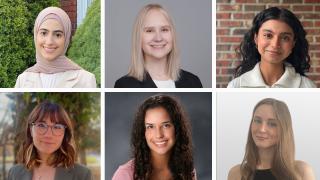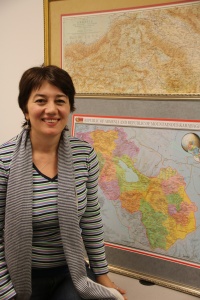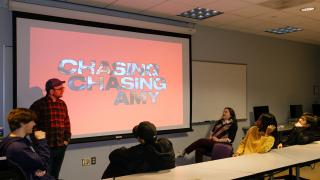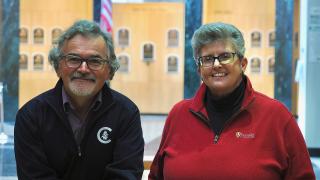
 Award-winning author and researcher Nona Shahnazarian had a topic for her next book, the drive to write it and important stories to tell.
Award-winning author and researcher Nona Shahnazarian had a topic for her next book, the drive to write it and important stories to tell.
But the Fulbright recipient didn’t have the means to do all the research she felt necessary—until she connected with Ara Sanjian, director of the Armenian Research Center on the university’s campus.
Shahnazarian, a research fellow at the National Academy of Sciences, Institute of Archaeology and Ethnography in Armenia, wanted to document the experiences of Armenians from Azerbaijan who immigrated to other countries—mainly to Armenia, Russia and the United States—after the Nagorno-Karabakh War erupted in the late 1980s in Azerbaijan.
She had hundreds of hours of interviews from those who went to Armenia and Russia after the ethnic conflict began, but didn’t have money in her budget to travel to America.
“When I met Dr. Sanjian at a conference in Armenia, I told him about my work and he agreed it was a significant topic. He said the Armenian Research Center could bring me to the United States,” she said.
Sanjian said the Armenian Research Center occasionally sponsors scholars whose work will advance Armenian studies knowledge.
“Dr. Shahnazarian proposed to us an understudied topic with fieldwork that can only be conducted while based in Southeast Michigan,” he said. “We see this work as a strong example of the university's Metropolitan Vision as the center consistently tries to widen its contacts with all sectors of the ethnic Armenian community in the metro Detroit area."
For two months this fall, Shahnazarian met with nearly 50 Armenians from Azerbaijan who moved to Michigan after the war’s outbreak. She spoke with them about their families, their homeland, the war and their assimilation experiences.
“What they all said was very similar when they talked about the war. But they had different stories after they immigrated. I learned, even though many still missed home, it was much better here than it was for those who went to Russia or Armenia,” said Shahnazarian.
Shahnazarian wasn’t completely surprised. She said conflict in Azerbaijan, which ignited after the USSR began disintegrating, was a result of repressed cultural identity that came about during the Soviet push for ethnonationalism. Armenians were largest ethnic minority in Baku, the capital city of Azerbaijan, and they were assimilated into the Russian culture. But outside the city, many Armenians in Nagorno-Karabakh wanted to unify with Armenia. Skirmishes between the groups turned into a war that left 30,000 dead and more than a million displaced.
Bakuvians who sought refuge in Armenia said they were seen as too Russian, but those who went to Russia weren’t Russian enough. Those who came to America weren’t as affected by the cultural conflict they left behind.
“The people who came here found that Americans didn’t even know where Azerbaijan was. Americans just saw them as hard workers and that’s valued here. Many became very successful,” she said. “Yes, there were language barriers and cultural differences. But those who came to America felt like they have a new life, a good life.”
Sanjian said there have been “timid efforts” in scholarship to analyze the refugee experience during this war. But there hasn’t been anything like what Shahnazarian is doing. He’s asked to have a copy of her research at the center when it’s published.
“We know there are Bakuvian refugees in the area who have been here for the past 20, 25 years and they have a story to tell. Dr. Shahnazarian is the right person for this. She is a good researcher with a high reputation,” he said. “I want to show the Bakuvians that we see them as a part of us, our community.”
Shahnazarian, who returned to Armenia at the end of November, said the center was her “research heaven.”
“I was introduced to many good people in the Armenian community and on campus,” she said. “I’m going back to Armenia with a very rich experience, one for which I’ll always be grateful.”





